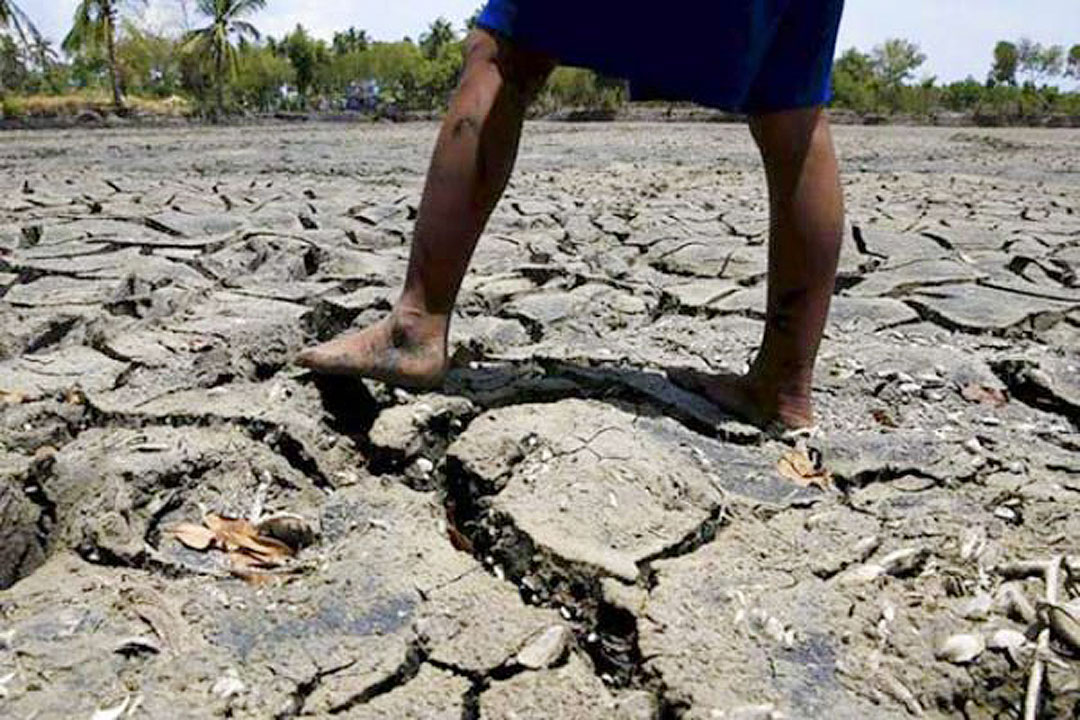
THE Department of Agriculture (DA) said it has compiled a list of provinces expected to be affected with the onset of El Niño, ranging from dry conditions to outright droughts.
In a bulletin, the DA’s Disaster Risk Reduction Management (DRRM) Operations Center said 28 provinces will experience dry conditions, 36 provinces dry spells, and two provinces drought.
The government weather service, known as PAGASA (Philippine Atmospheric, Geophysical and Astronomical Services Administration), officially defines dry conditions as two consecutive months of below-normal rainfall. It classifies rainfall as below normal with declines of 21-60%.
It classifies two consecutive months of more than 60% rainfall decline as dry spells.
It defines droughts as five consecutive months of below-normal rainfall.
Provinces in the north of the Philippines subject to dry conditions are Abra, Batanes, and Cagayan.
In the Visayas, the provinces similarly affected are Negros Occidental, Negros Oriental, Bohol, Cebu, and Siquijor.
In the south of the Philippines, the provinces expected to experience dry conditions are Zamboanga del Norte, Zamboanga del Sur, Zamboanga Sibugay, Bukidnon, Camiguin, Lanao del Norte, Misamis Occidental, Misamis Oriental, Davao de Oro, Davao del Sur, Davao Oriental, South Cotabato, Cotabato, Sultan Kudarat, Basilan, Maguindanao, Lanao del Sur, Sulu, and Tawi-Tawi.
Dry spells are projected to occur in Abra, Benguet, Ifugao, Kalinga, Apayao, Mountain Province, Ilocos Norte, Ilocos Sur, La Union, Pangasinan, Isabela, Nueva Vizcaya, Quirino, Bataan, Bulacan, Nueva Ecija, Pampanga, Tarlac, Zambales, Metro Manila, Batangas, Laguna, Rizal, Quezon, Marinduque, Occidental Mindoro, Oriental Mindoro, Romblon, Palawan, Camarines Sur, and Catanduanes.
Similarly affected provinces in the Visayas are Antique, Guimaras, Iloilo, Leyte, and Southern Leyte.
Drought is forecast for Camarines Norte and Northern Leyte, according to the bulletin.
On Tuesday, the PAGASA announced the onset of El Niño, which is expected to persist until the first quarter of 2024.
According to the World Meteorological Organization, El Niño emerged in the tropical Pacific for the first time in seven years.
“El Niño increases the likelihood of below-normal rainfall conditions, which could bring negative impacts in some areas of the country,” the DA said.
“However, over the western part of the country, above-normal rainfall conditions during the Southwest monsoon season may also be expected,” it added.
Jayson H. Cainglet, executive director of Samahang Industriya ng Agrikultura, told BusinessWorld in a Viber chat that “the most crucial” intervention for local producers is the assurance of indemnity and full insurance coverage for the potential losses.
“What is important for us is that the farmers have an assurance that even they plant and hit by El Niño, the government can compensate through insurance coverage, subsidized or free farm inputs and other programs to offset their losses,” he said. — Sheldeen Joy Talavera



